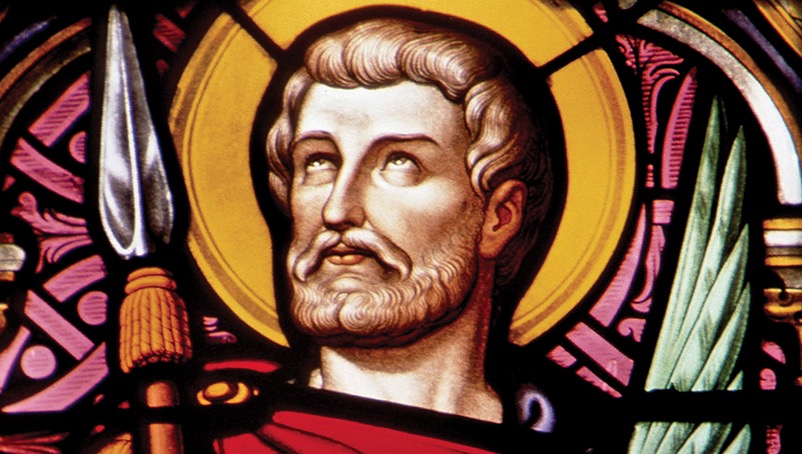The first Christians saw a connection between the courage and endurance of the martyrs and the courage and endurance of athletes. In his second letter to St. Timothy, St. Paul, knowing that his martyrdom was not far off, compared himself to a boxer and a runner: “I have fought a good fight,” he said. “I have finished my course.” A few decades later, about the year 110, the martyr St. Ignatius of Antioch wrote to his fellow bishop St. Polycarp urging him to act like “an athlete of God [for whom] the prize is immortality and eternal life.”
Ignatius and Polycarp were elderly and Paul was probably in his 60s when they gave their lives for the Faith — perhaps not the most athletic period of their lives. But for centuries artists have portrayed St. Sebastian as a handsome young man with the physique of a personal trainer.
Although there is no doubt that there was a Roman martyr named Sebastian, and that devotion to him dates back to the fourth century, the earliest surviving life of the saint was written a century or more after his death. According to this story Sebastian was a Praetorian, a member of an elite troop of soldiers who served as the emperor’s bodyguard. When Emperor Diocletian began his persecution of the Church, Sebastian used his status to visit Christians in prison. This was dangerous business, and it was not long before he was denounced to the emperor.
Enraged that one of his own bodyguards was a Christian, Diocletian ordered the Praetorians to take Sebastian back to their camp and shoot him to death with arrows. After perforating their former comrade, the Praetorians assumed that Sebastian was dead. So did everyone else who heard of his martyrdom. After sunset a Christian woman named Irene crept into the Praetorians’ camp to retrieve the body and give it a Christian burial. As Irene and her serving woman cut Sebastian down, they heard him groan. Incredibly, he was still alive.
Instead of carrying him to the catacombs for burial, Irene brought Sebastian back to her house where she and her servant nursed him. As soon as his strength returned, Sebastian went off to confront Diocletian. He found the emperor on the steps of the imperial palace. Furious that his former bodyguard was still alive, Diocletian demanded of his entourage, “Did I not sentence this man to be shot to death with arrows?” But Sebastian answered for the emperor’s courtiers. He had been made a target for archers, “But the Lord kept me alive so I could return and rebuke you for treating the servants of Christ so cruelly.”
This time the emperor took no chances: Diocletian ordered his guard to beat Sebastian to death there on the palace steps, while he watched. Once he was certain that Sebastian truly was dead, Diocletian had the martyr’s body dumped into the Cloaca Maxima, Rome’s main sewer. Nonetheless, Christians recovered it and buried Sebastian in a catacomb known ever since as San Sebastiano.
St. Sebastian is the patron saint of archers and of the Pontifical Swiss Guards. His feast day is Jan. 20.
Thomas Craughwell is the author of more than 30 books, including “Saints Behaving Badly” and “This Saint Will Change Your Life.”

